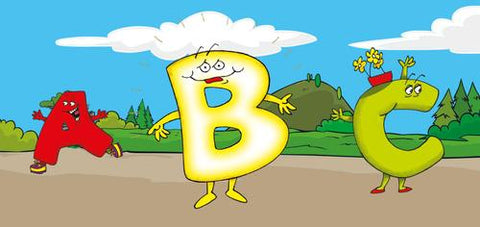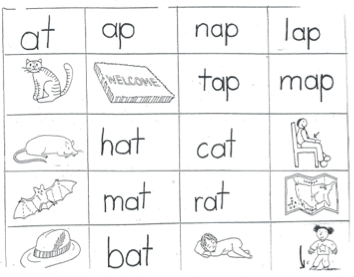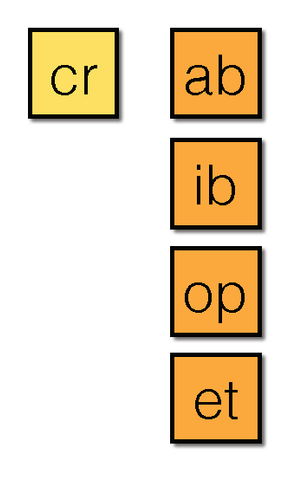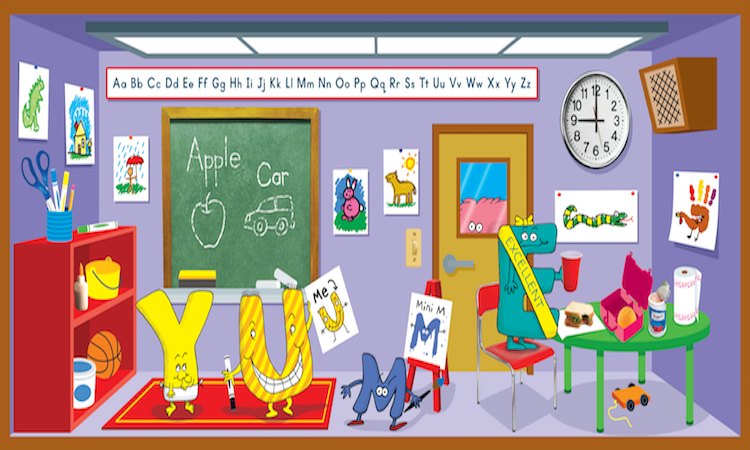By Sarah Maze, M.S. Ed., Guest Blogger
Do you know the difference between phonemic awareness and phonological awareness? What about effective strategies to support students in their mastery of these skills? As teachers, we sometimes need to use these terms, but we also may forget what they mean. In this post, after identifying the difference between phonemic and phonological awareness, I'll share some helpful tools and tips that will help struggling readers become confident readers.
Let’s begin with a definition of each:
Phonemic awareness is the understanding of isolated phonemes (units of sound) and includes identifying, isolating, and manipulating phonemes. Phonemic awareness is part of phonological awareness.
Common Core State Standards for Language Arts include a strand called Reading Foundational Skills. Nestled within this strand are standards to address phonemic awareness and phonological awareness. Kindergarten students begin this journey of building the foundational skills of phonemic awareness when they practice letter identification and begin learning the letter sounds of the alphabet. Students in this grade are also expected to apply phonological awareness by producing rhyming words and demonstrating syllable skills, such as counting and blending syllables. Once these foundational skills are mastered, your students will continue developing both phonemic and phonological awareness.
Here are a few tips you can use that can build both phonemic and phonological awareness during shared reading or a guided reading lesson.
1. Letter Introduction List
- When
 you introduce letters and their corresponding phonemic sounds, consider using word examples to connect to the sound. For example, when you introduce the letter
D
, students can brainstorm a list of words that begin with /d/, such as
door
,
dinosaur
,
desk
, etc.
you introduce letters and their corresponding phonemic sounds, consider using word examples to connect to the sound. For example, when you introduce the letter
D
, students can brainstorm a list of words that begin with /d/, such as
door
,
dinosaur
,
desk
, etc.
You can record their responses on chart paper, and then read Letter Buddies Letter Books . Boost student engagement by making a game where students see if the word they thought of is included in the book. You can also develop writing skills by having students write letters with different materials, such as a crayon, dry erase marker, pencil, sidewalk chalk, or water-soluble paint.
2. Connecting Letter Sounds with Text - As students begin to learn sight words while they master specific phonemes, pairing Letter Buddies Starters with the letter books is a natural and effective way to build phonemic awareness. After reading the letter book, try using the corresponding starter book. These books include repetitive and simple sentence structure with many sight words. This is great for practicing several skills: phonemic awareness of the letter being taught, acquisition of vocabulary words beginning with that letter, and recognition of sight words.
3. Letter Tracking with Songs - Have students track letters with finger pointers or their own fingers as they sing the alphabet song. There are many songs that explore the letter sounds, so students can sing the song while practicing each sound. When I taught first grade, some students didn't know all their letters and sounds. I modeled singing an alphabet song while tracking each letter and its sound with an alphabet on paper that showed pictures of the objects named in the song. I sent students home with an individual CD player, headphones, and an alphabet page. This helped students quickly learn the song, letters, and phonemes with their families. Some examples of these songs can be found here and here .
 4. Alphabet Manipulatives
- An easy way to engage young learners with hands-on activities is by using a set of alphabet manipulatives. These can be magnetic letters, foam letters, or tiles from Scrabble. You can have students match upper- and lowercase letters to build letter identification, practice spelling words, or create a new word by changing the initial letter to improve blending skills. I used cookie sheets from the dollar store when students used magnetic letters. Hameray offers
magnetic lowercase letters
and
magnetic uppercase letters
, too!
4. Alphabet Manipulatives
- An easy way to engage young learners with hands-on activities is by using a set of alphabet manipulatives. These can be magnetic letters, foam letters, or tiles from Scrabble. You can have students match upper- and lowercase letters to build letter identification, practice spelling words, or create a new word by changing the initial letter to improve blending skills. I used cookie sheets from the dollar store when students used magnetic letters. Hameray offers
magnetic lowercase letters
and
magnetic uppercase letters
, too!
5. Picture Sorts and Games - Students begin to differentiate between phonemes by sorting pictures. Create a page of pictures with two columns. One column could be for words that begin with /s/, and the other column can be for words that begin with /m/. The headers of “Ss” and “Mm” should be placed at the top of their respective columns. Then instruct students to say each picture word aloud, listen for the beginning sound, and place pictures in the correct column. Choose words from books students have read, and include a few new words that begin with each of these letters. You can also choose to have a column for oddballs that is labeled "?” for students to place words that do not begin with either letter sound.
 Sorts can be used with isolated phonemes, word families, blends, long vowels, short vowels, etc. Consider using an ABC recognition game (shown here) where students match letters to a picture that begins with that letter sound. With this example, you can have students sort the pictures first, and then match the word to each picture.
Sorts can be used with isolated phonemes, word families, blends, long vowels, short vowels, etc. Consider using an ABC recognition game (shown here) where students match letters to a picture that begins with that letter sound. With this example, you can have students sort the pictures first, and then match the word to each picture.
 6. Blend Building
- After reading
Letter Buddies Blends
books, you can have students play a game where they pair the onsets being taught with different rime cards to make new words. Some of the new words may be make-believe words. This is great for continued practice with phonological awareness. In this example, the yellow
cr
card would be the blend/onset, and the orange cards would be different rimes they can work with.
6. Blend Building
- After reading
Letter Buddies Blends
books, you can have students play a game where they pair the onsets being taught with different rime cards to make new words. Some of the new words may be make-believe words. This is great for continued practice with phonological awareness. In this example, the yellow
cr
card would be the blend/onset, and the orange cards would be different rimes they can work with.
7. Syllable Counting - After teaching your students about syllables, have them build phonological awareness by counting syllables in Letter Buddies Blends . To make this more interactive and check for understanding during instruction, you can ask students to bring a marker board to shared reading time. Read a page of the Letter Buddies Blends book together. Then ask the students to write the number of syllables on their marker board. After checking for understanding, have students clap and count the syllables with you.
8. Rhyme Time - Rhyming is one of the skills included in phonological awareness. During a guided reading lesson, you can create manipulatives with pool noodles as a fun way to practice rhyming skills with short vowel word families. Write consonants on one color and vowels on a contrasting color. Have students change the initial letter to create a new rhyming word. You can provide an initial word like cat for the students to spell. Then you can show a new rhyming word like hat . Tell the students they can only change one letter, or you could give a clue by saying, “Change the C in cat to H , and read the new word.”
There are many more literacy strategies to engage students in acquiring phonemic and phonological awareness. With a little teacher planning, students will look forward to your hands-on activities and to the reading resources you provide. These activities and resources will contribute to students' learning and to their development of these critical, foundational reading skills.
Continue to check the blog regularly for more ideas and support in these areas!




















































